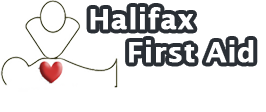First aid for choking of unconscious adults or children over age one will slightly differ from first aid for a conscious victim. Objects can range from eating too fast to choking on one’s own vomiting. Choking is classified either as partial or complete. Partial blockage of the airway occurs when the airway is not blocked completely but causes the victim to not breathe adequately. It may easily lead to a medical emergency. On the other hand, a complete blockage of airway occurs when an object completely blocks the airway leading to the inability to breathe. Complete blockage is considered a medical emergency. In cases where the brain does not receive oxygen, the individual can quickly lose consciousness. There is danger of permanent brain damage when the brain does not receive sufficient amount of oxygen in as little as four to six minutes. Thus, the importance of knowing first aid for choking of adults or children over age one is an essential first aid skill.
Causes of Choking – Unconscious Adults or Children Over Age One
The following may lead to choking of adults or children over age one:
- Eating rapidly, hence failing to chew food properly, or eating with poorly fitted dentures
- Drinking alcohol, even in small amounts
- Being unconscious and inspiration of vomited specimen
- Inhaling or swallowing small objects, especially in small children
- Face or head injuries, such as bleeding, swelling or deformity
- Aftereffects of a stroke with swallowing difficulties
- Tumors and enlarging tonsils found at the neck and throat
Signs and Symptoms of Choking – Unconscious Adults or Children Over Age One
When a person is found unconscious, it may be difficult to determine the cause of loss of consciousness. The common signs and symptoms of unconscious adults or children over age one due to choking include:
- Cyanosis of the lips and nails
- Unable to breathe
- Unable to talk
- Lack of alertness
First Aid Management Choking – Unconscious Adults or Children Over Age One
It is important to administer first aid immediately to unconscious adults or children over age due to choking to ensure minimal damage. The following steps are recommended to these individuals:
- On a hard surface, roll the victim onto the back, with the back in a straight line and the head and neck firmly supported. Expose the chest of the victim.
It is necessary to support the head and neck of victims of choking of unconscious adults or children over age one - Using own thumb and index fingers, open the victim’s mouth by placing the thumb over the victim’s tongue while the index finger is kept under the chin. Remove the object only if it is visible and loose. For individuals older than eight, sweep two fingers from one side of the throat to the other in an attempt to remove the object.
- To move the tongue away from the windpipe, lift the person’s chin while tilting the head back.
- Watch for chest movement by placing own ear close to the victim’s mouth. Look, listen and feel for breathing for five seconds.
- If there is breathing, administer first aid for unconsciousness.
- If there is no breathing, give rescue breathing. If there is no rising in the chest, reposition the head and give two rescue breaths.
- Once again, open the victim’s mouth using the thumb and index fingers. Remove the object if it is visible and loose.
- If the object is removed but no pulse is detected or if no object is visible, initiate CPR with chest compressions.
- For victims experiencing seizures, administer proper first aid.
To learn how to properly administer first aid in choking of unconscious adults or children over age one, enroll in First Aid Courses with CPR Training.
Online Sources:

